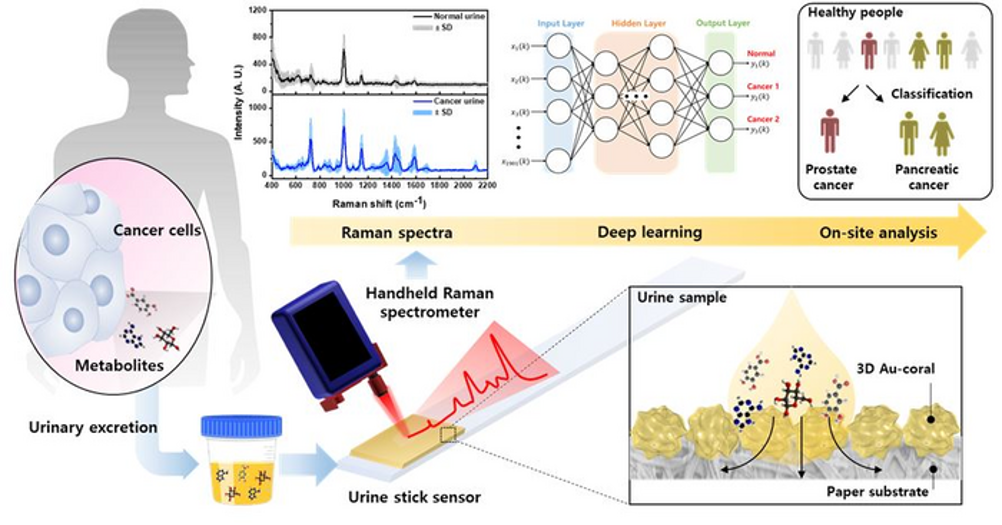When cancer cells proliferate in the body, the change in metabolism leads to different metabolites being secreted into urine. Led by Dr Ho Sang Jung, the research team developed a surface-enhanced Raman scattering sensor that amplifies the optical signal of metabolites in urine more than 1 billion times by forming a coral-shaped plasmonic nanomaterial on porous paper. When urine is dropped into the sensor and light is irradiated, cancer metabolite signals are amplified on the sensor surface, making it possible to diagnose cancer.

In testing, the KIMS team used an AI-based analysis method on the acquired spectral signal. They succeeded in detecting up to 99 per cent of prostate cancer and pancreatic cancer patients. The work is published in Biosensors and Bioelectronics.
“In the case of cancers where the diagnosis method is not well known, such as pancreatic cancer, it is difficult to detect and the survival rate after initial diagnosis is low,” said Ho Sang Jung.
Related content
“It is known that 14 pancreatic cancer patients die every day in Korea, and the economic cost per person is about 63 million won per year. Since early diagnosis is the most important for incurable diseases such as cancer, we expect this technology to provide a new diagnostic method.”
According to the researchers, the technology can be used to screen for prostate and pancreatic cancer without any additional analysis, using only irradiating light and a small volume (10uL) of urine. The KIMS team anticipates the production cost of the sensors to be less than £0.07, making it a cost-effective method for mass screening. They are now focused on gradually increasing the types of cancer that can be diagnosed, expanding analysis to colorectal cancer and lung cancer patients. The work was supported by the Fundamental Research Program of the Korea Institute of Materials Science (KIMS) and the National Research Foundation of Korea.











PMI falls as manufacturers feel the squeeze
17 months or two and a half years - which is it?